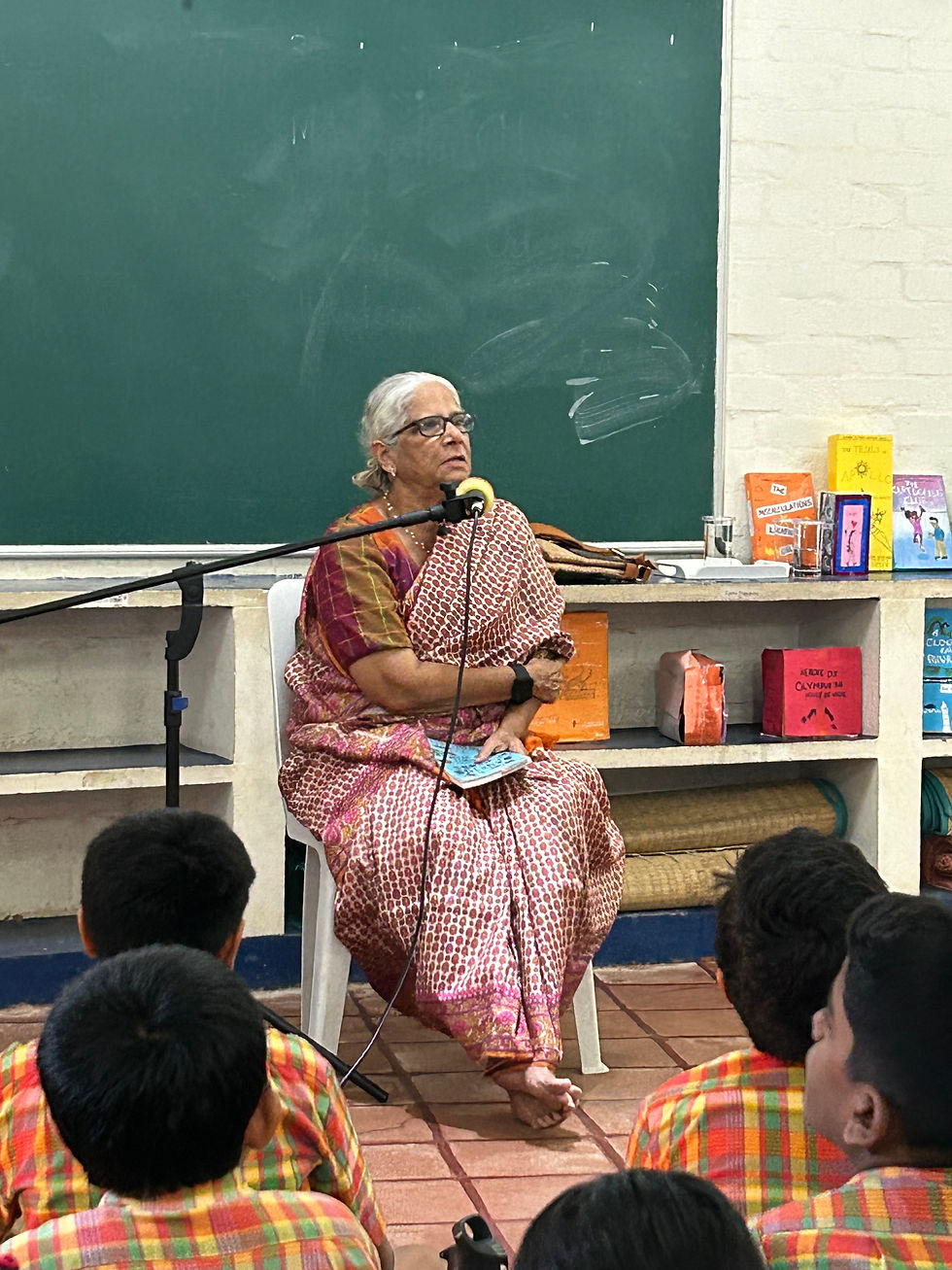On Reading a Book Series...
- JoAnne Saldanha
- Mar 6, 2023
- 3 min read

The image above shows a poster that we have in the library to draw children’s attention to some of the book series we have on our shelves.
This chart focusses on middle grade books and when we rearranged the shelves, we realised that we had more for this age group than what is mentioned on the poster.
There will soon be one chart for secondary and another for younger elementary.
Why did I find the need to do this?
Over the years, I have noticed the power of the book series.
Often with a student who is aimlessly wandering around the library, unable to make a choice or one who finds reading ‘boring’, I tend to suggest reading a series. This suggestion is often backed by their peers, which is often followed by a little discussion between a small group of children who in turn make their own recommendations. With older elementary and secondary students, there is nothing quite like peer recommendations.
While there is a bit of snobbery in children's literature circles regarding how well written a series may be, in comparison to a standalone novel, my goal is to help my students enjoy reading for pleasure and to grow into lifelong readers.
Reading the classics too soon as a child can do more to turn you off reading than on to reading. Remember: The goal is to create a lifetime reader, not a future English teacher.
Jim Trelease, author of The Read Aloud Handbook

There are two types of book series:
- Sequential Series
In a sequential series, the plot is connected through the books, chronologically.
Eg: Harry Potter
- Non-sequential series
Each book has an independent story with recurring characters and settings. The books may be read in any order.
Eg: Famous Five, Nancy Drew

Why read a series?
1. Leads to more reading!
When children find a book they enjoy, they are always keen to read more, inevitably reading the entire series.
2. Builds their confidence as readers
In a series, each new book, builds on the first. As they read, they build on their understanding of the setting, characters and plot…building on knowlege that they are already familiar with. As their comprehension of the story grows, reading becomes easier, giving a sense of competence to even the most reluctant reader.
3. Connection to other mediums
As a book series progresses, they often tend to develop deeper and more complex characters and plots, often lending themselves to being interpreted in different mediums….be it graphic novels, movies, animated series, theatre performances and consequently music. Leading children to appreciate and enjoy different forms of art and language.
4. The social element
Book series get children excited. They are excited to talk to their peers about the books, there is much discussion, debate, sharing of favourite characters and scenes, recommendations and discussions around book vs movie.
Children who may have never found anything in common with each other, find they can connect over a book.
I must end by saying that book series are very popular with avid readers too, they form my support team in the library…they back up my recommendations, adding weight to sharing. Otherwise, I’d just be the boring old library Aunty…what does she know?!!?
We have an obligation not to bore our readers, but to make them need to turn the pages. One of the best cures for a reluctant reader, after all, is a tale they cannot stop themselves from reading.
Neil Gaiman








Comments